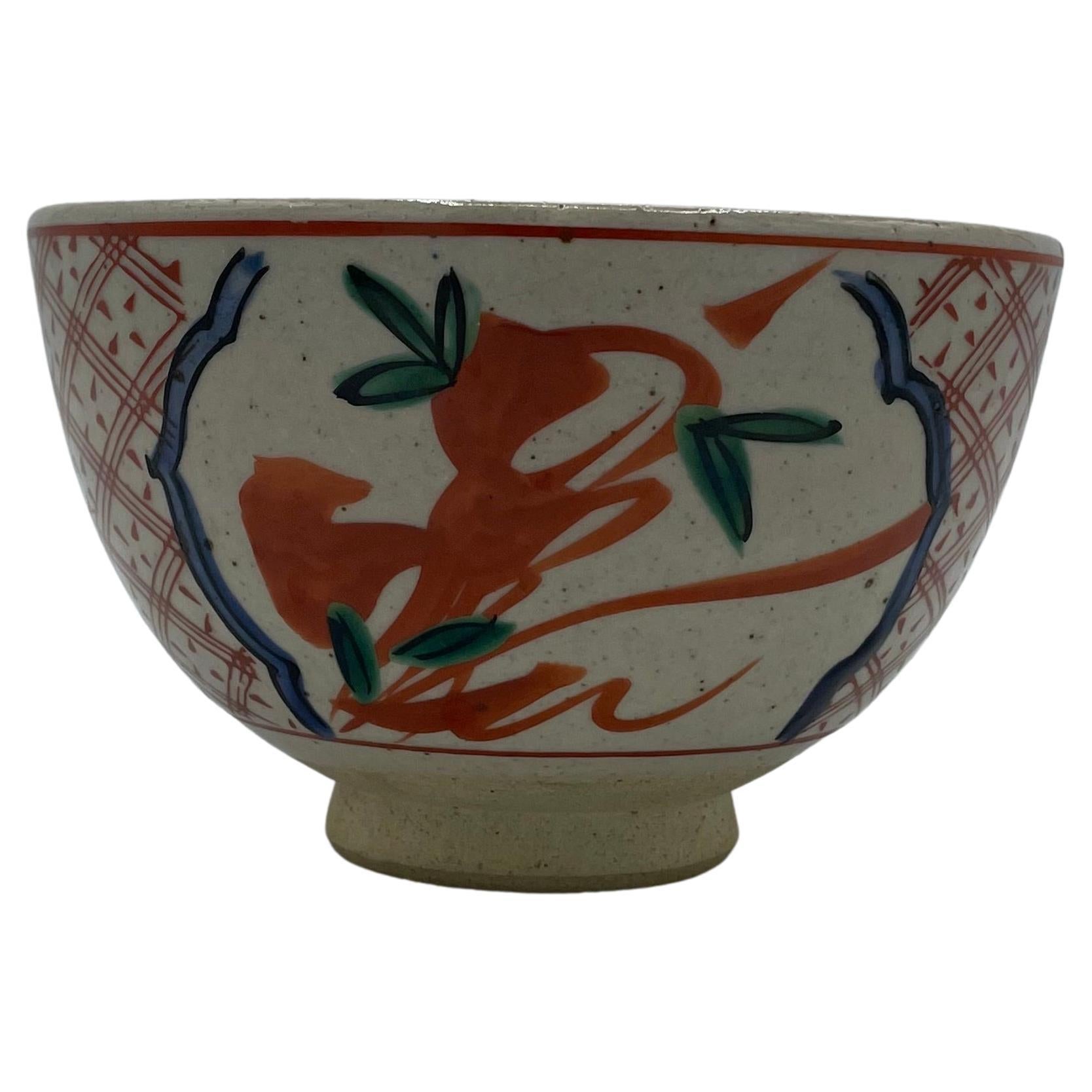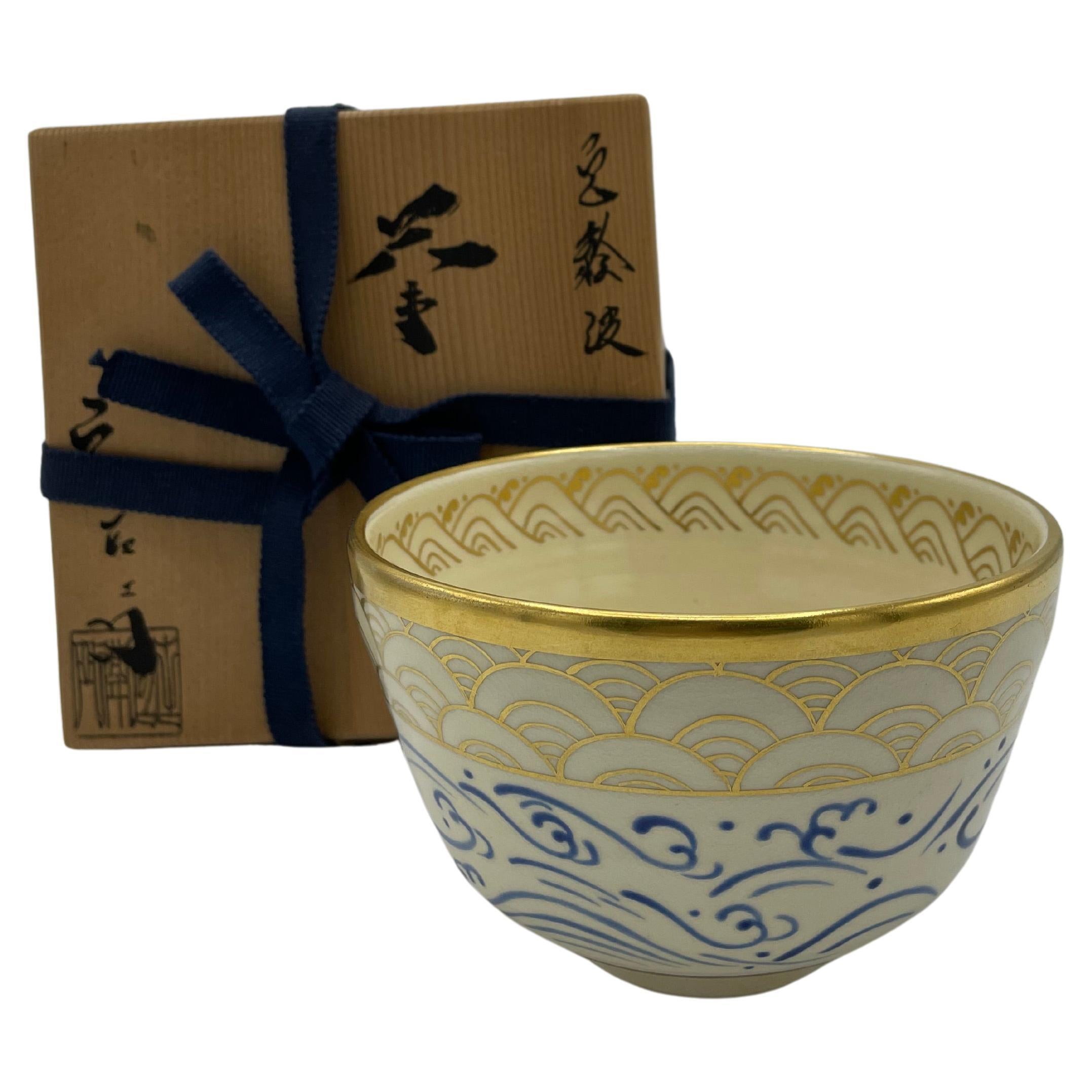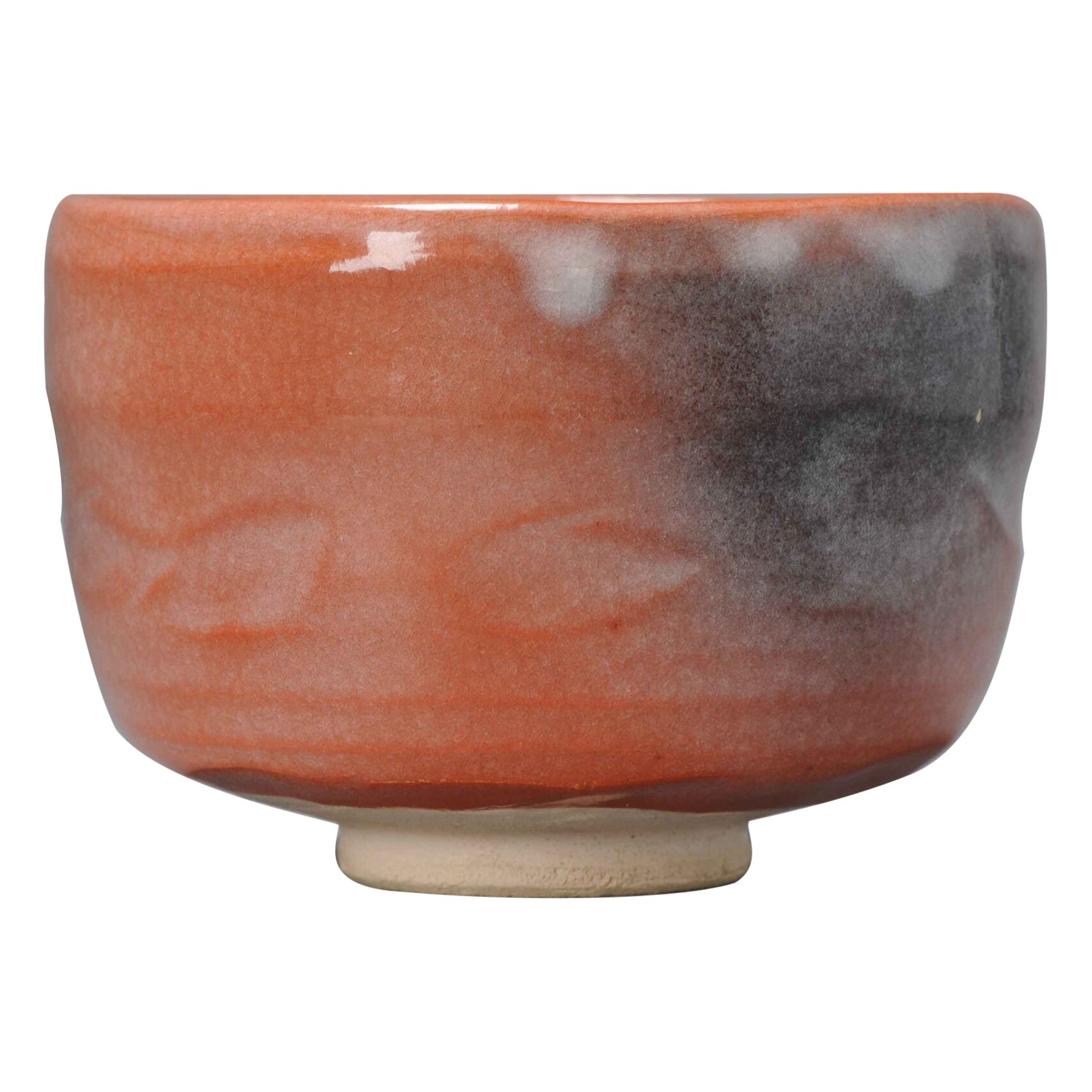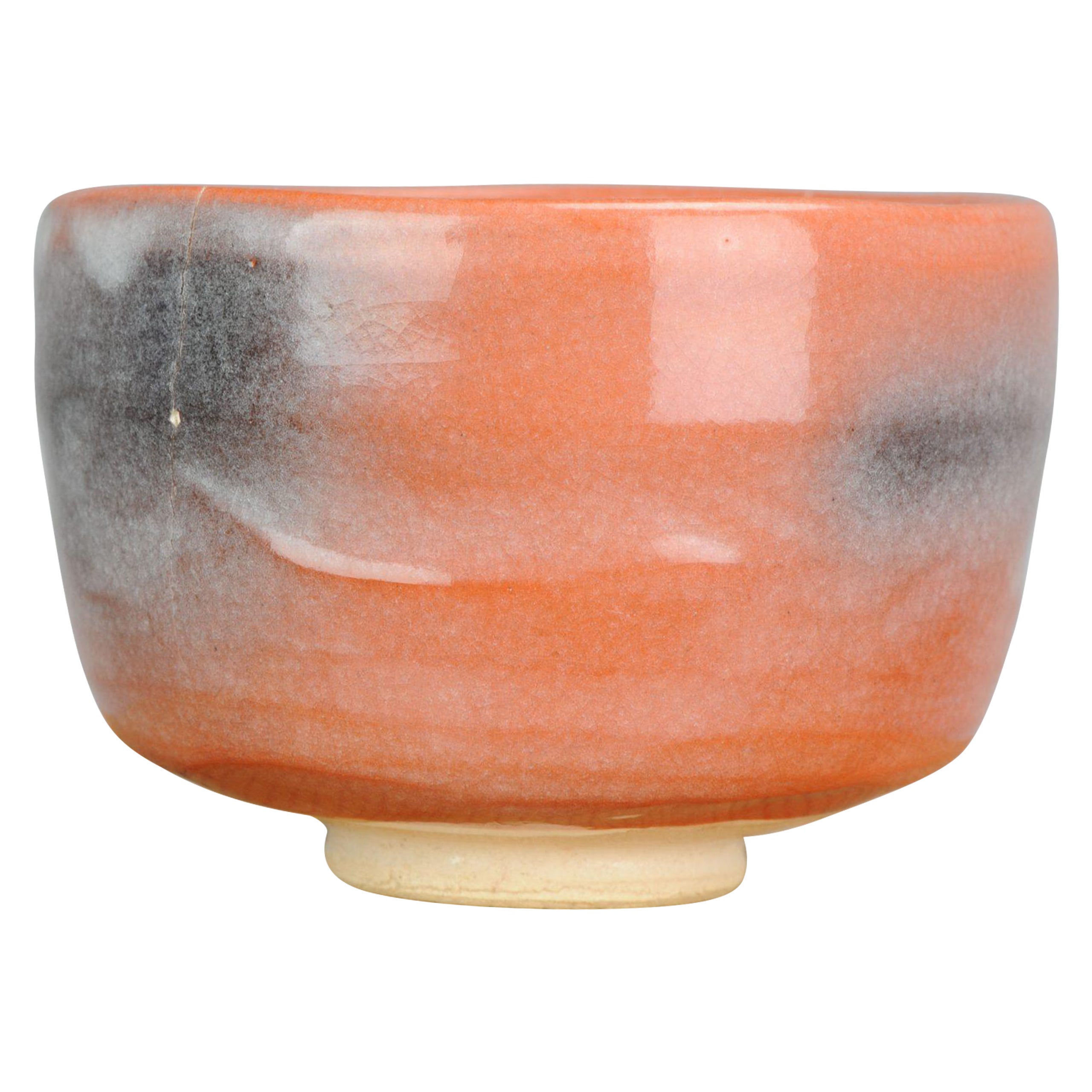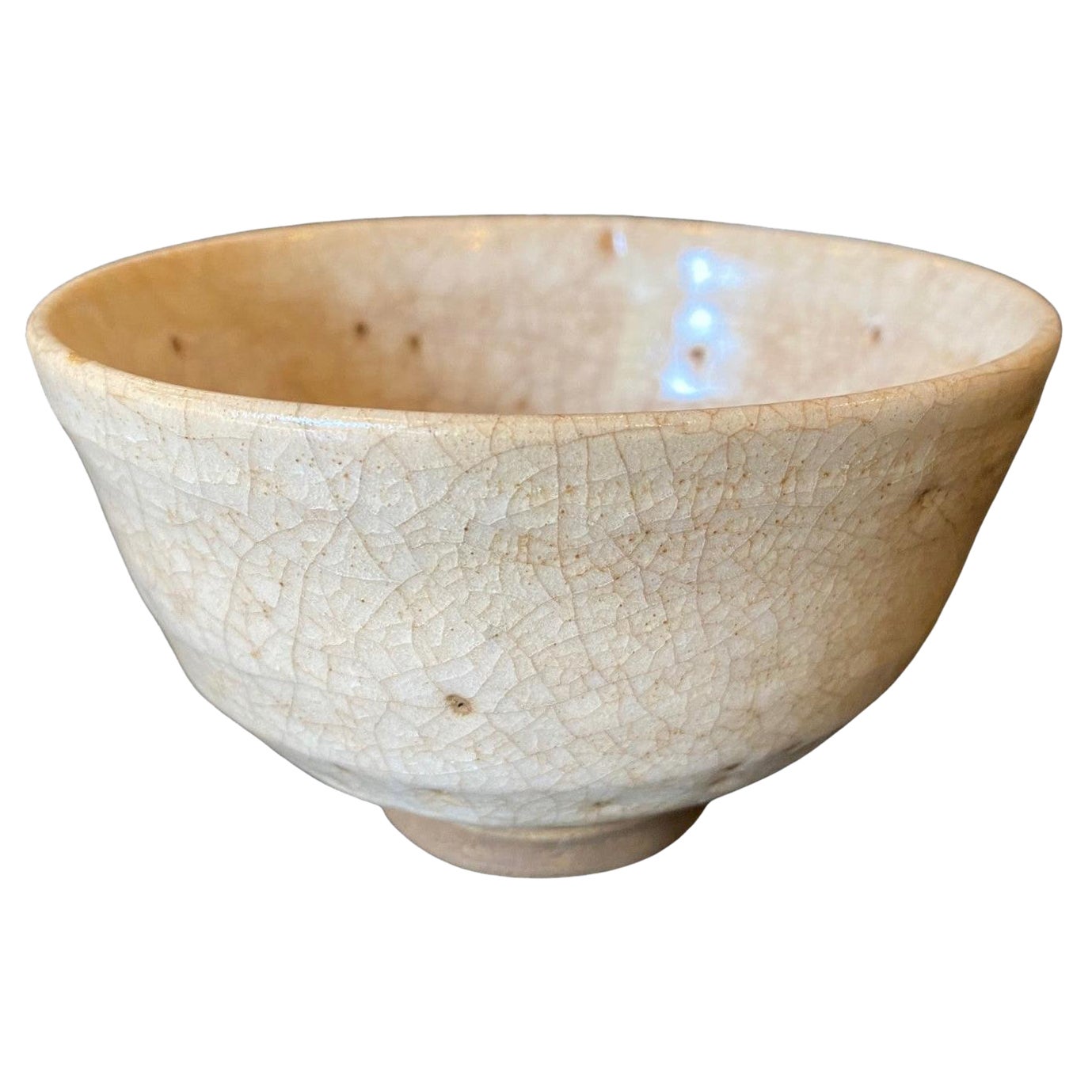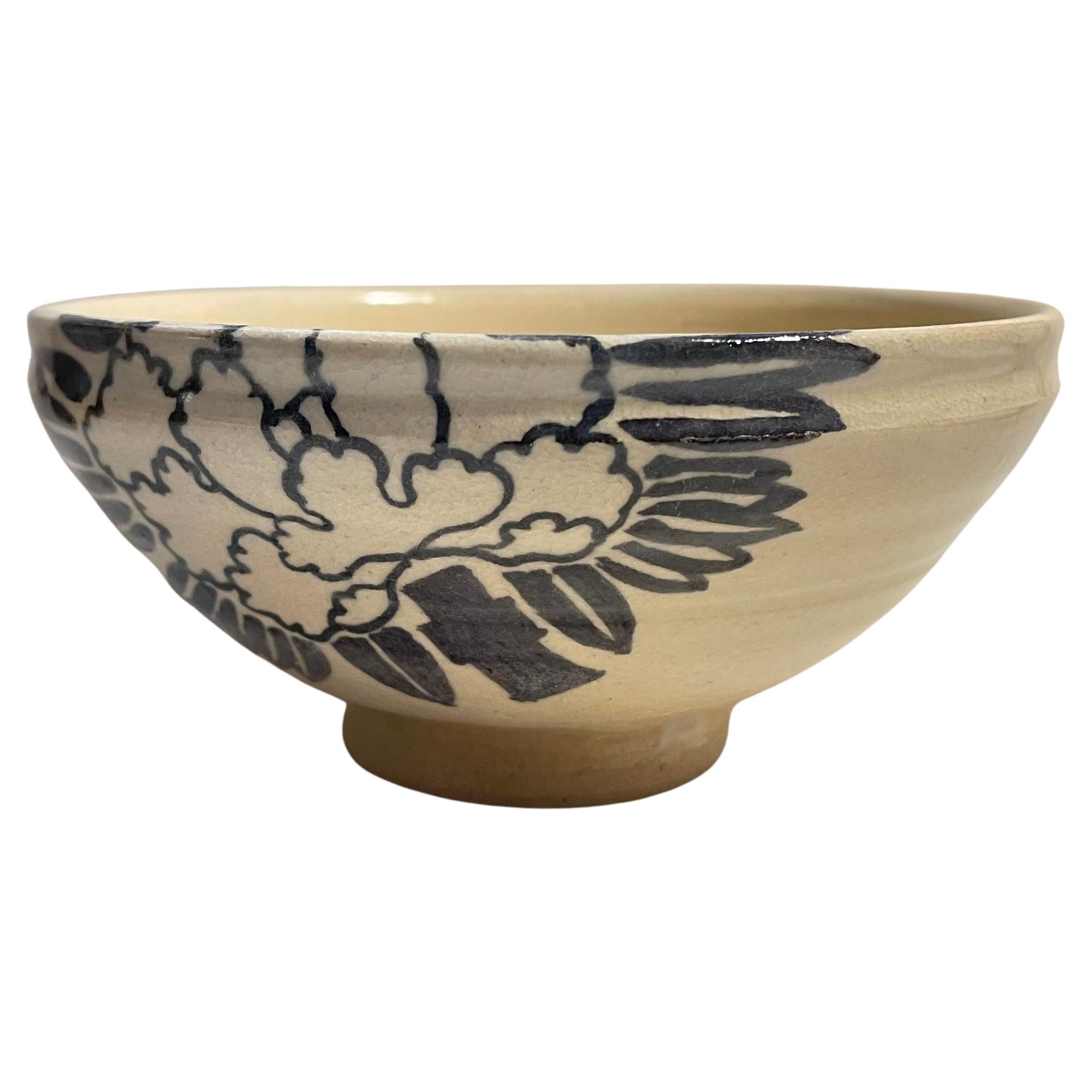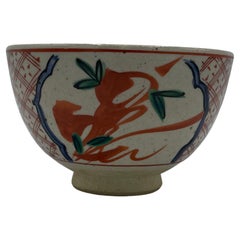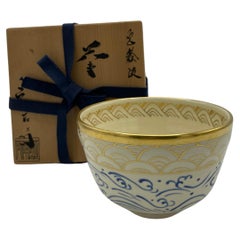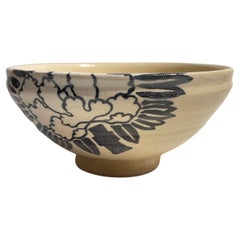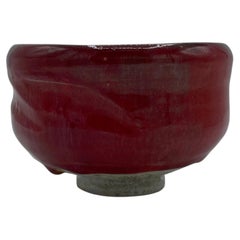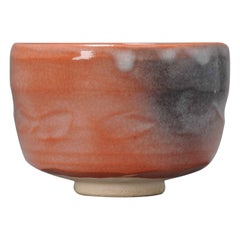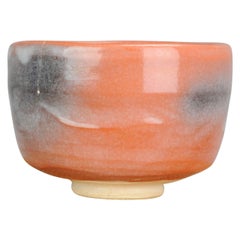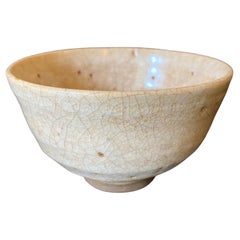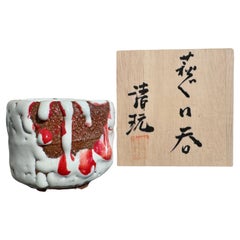Items Similar to Japanese Matcha Tea Ceremony Bowl Rakuyaki 2000s Heisei Yoshimura Rakunyu
Want more images or videos?
Request additional images or videos from the seller
1 of 10
Japanese Matcha Tea Ceremony Bowl Rakuyaki 2000s Heisei Yoshimura Rakunyu
$501.93
£371.58
€420
CA$694.55
A$765.61
CHF 400.60
MX$9,393.81
NOK 5,042.82
SEK 4,715.83
DKK 3,197.88
About the Item
This is a tea bowl for matcha.
It was used to use during tea ceremony.
This bowl is made with porcelain and it will come with a wooden box.
This bowl was made with style Raku (Raku yaki). It was made by Rakunyu Yoshimura.
Raku ware is a type of Japanese pottery traditionally used in Japanese tea ceremonies, most often in the form of chawan tea bowls. It is traditionally characterised by being hand-shaped rather than thrown, fairly porous vessels, which result from low firing temperatures, lead glazes and the removal of pieces from the kiln while still glowing hot. In the traditional Japanese process, the fired raku piece is removed from the hot kiln and is allowed to cool in the open air. (By Wikipedia)
- Dimensions:Height: 3.35 in (8.5 cm)Diameter: 4.53 in (11.5 cm)
- Materials and Techniques:
- Place of Origin:
- Period:1990-1999
- Date of Manufacture:2000
- Condition:
- Seller Location:Paris, FR
- Reference Number:1stDibs: LU6325238861532
About the Seller
5.0
Vetted Professional Seller
Every seller passes strict standards for authenticity and reliability
1stDibs seller since 2022
51 sales on 1stDibs
Typical response time: 6 hours
- ShippingRetrieving quote...Shipping from: Paris, France
- Return Policy
Authenticity Guarantee
In the unlikely event there’s an issue with an item’s authenticity, contact us within 1 year for a full refund. DetailsMoney-Back Guarantee
If your item is not as described, is damaged in transit, or does not arrive, contact us within 7 days for a full refund. Details24-Hour Cancellation
You have a 24-hour grace period in which to reconsider your purchase, with no questions asked.Vetted Professional Sellers
Our world-class sellers must adhere to strict standards for service and quality, maintaining the integrity of our listings.Price-Match Guarantee
If you find that a seller listed the same item for a lower price elsewhere, we’ll match it.Trusted Global Delivery
Our best-in-class carrier network provides specialized shipping options worldwide, including custom delivery.More From This Seller
View AllJapanese Matcha Bowl for Tea Ceremony 1990s Heisei Mizuho
Located in Paris, FR
This is a matcha bowl which we use during a tea ceremony in Japan.
There are a signature written on the bottom of this bowl 'Mizuho'.
This matcha bowl was made in Japan around 1990s ...
Category
1990s Japanese Decorative Bowls
Materials
Porcelain
Japanese Antique Matcha Bowl Kyo Ware Oshikoji Wave 1980s
Located in Paris, FR
This is a matcha bowl which we use for tea ceremony.
This bowl was made around 1980s in Showa era in Japan.
The style of this bowl is Oshikoji. It is one of the style of Kyo yaki.
...
Category
Vintage 1980s Japanese Showa Ceramics
Materials
Porcelain
Japanese Matcha Bowl for Tea Ceremony 1980s Showa
Located in Paris, FR
This is a matcha bowl which we use for tea ceremony.
This bowl was made around 1980s in Showa era in Japan.
This is made with porcelain.
Dimensions: 13x 13 x H 6 cm
Category
Vintage 1980s Japanese Showa Porcelain
Materials
Porcelain
Japanese Matcha Bowl for Tea Ceremony Akaraku 1990s
Located in Paris, FR
This is a Matcha tea bowl which we use during a tea ceremony.
This bowl was made with style Raku (Raku ware).
This is made with porcelain.
Raku ware is a type of Japanese pottery t...
Category
1990s Japanese Showa Decorative Bowls
Materials
Porcelain
Japanese Matcha Bowl for Tea Ceremony FUJIN Kyo-kiyomizu Narutakigama
Located in Paris, FR
This is a matcha bowl which we use for tea ceremony. This is all hand painted and it was made with style Kyo-kiyomizu, Narutaki gama which was made in Kyoto prefecture.
And the desig...
Category
1990s Japanese Showa Serving Bowls
Materials
Porcelain
$485 Sale Price
30% Off
Japanese Antique Matcha Bowl 1970s
Located in Paris, FR
This is a matcha bowl which we use for tea ceremony.
It was made around Showa era 1970s.
The materials are porcelain.
Dimensions:
H 8.2 x 12.5 x 12.5 cm
Category
Vintage 1970s Japanese Tea Sets
Materials
Porcelain
You May Also Like
Vintage Japanese Period Chawan Tea Bowl with Tomobako, 20th Century
Located in Amsterdam, Noord Holland
A very nice tea bowl
Additional information:
Material: Porcelain & Pottery
Type: Bowls, Tea/Coffee Drinking: Bowls, Cups & Teapots
Region of Origin: Japan
Period: 20th century Meiji...
Category
20th Century Japanese Serving Bowls
Materials
Porcelain
$238 Sale Price
20% Off
Japanese Taisho Period Tea Bowl in Tomobako, Earthenware Japan Tea
Located in Amsterdam, Noord Holland
Japanese Taisho Period Tea Bowl in Tomobako,Earthenware Japan Tea.
A very nice tea bowl
The box is included
Additional information:
Material:...
Category
20th Century Japanese Tea Sets
Materials
Porcelain
$718 Sale Price
20% Off
Shinbei Sakakura X (10th) Japanese Hagi Yaki Ware Pottery Chawan Tea Bowl & Box
Located in Studio City, CA
A wonderfully hand crafted and beautifully glazed Hagi Yaki Ware Chawan tea bowl by the 10th Shinbei Sakakura (X). This piece has quite a special feel to it. The Chawan radiates i...
Category
Antique Mid-19th Century Japanese Edo Ceramics
Materials
Pottery, Stoneware
Small Japanese Oni Hagi Chawan (Tea Bowl) by Seigan Yamane, circa 2010, Japan
Located in Austin, TX
A small but powerful Japanese white oni hagi yaki chawan (teabowl) by renowned contemporary master potter Seigan Yamane (b. 1952), circa 2010, Japan.
The small tea bowl of typical t...
Category
2010s Japanese Ceramics
Materials
Pottery
Circa 1850 Kiyomizu Chawan or Tea Ceremony Bowl
Located in Chapel Hill, NC
Circa 1850 Kiyomizu Chawan or Tea Ceremony Bowl, Kyoto, Japan. A rare example, late Edo period. Incredibly light pottery, elegant crackle glaze & restrained decoration of a few leave...
Category
Antique 1850s Japanese Other Pottery
Materials
Pottery
$360 Sale Price
20% Off
Rare Published Japanese Ceramic Bowl Makuzu Kozan with Original Inscribed Box
By Makuzu Kozan
Located in Atlanta, GA
A rare published glazed ceramic bowl with surface paint decoration by Japanese imperial potter Makuzu Kozan ((1842–1916) with its original inscribed tomobako storage wood box. Unlike the better-known works Kozan made for the expositions in the west and export to the foreign market, this piece exemplifies his work for the domestic market and specifically, the tea ceremony. The bowl was made in the so called "Utusushi" Ogata Kenzan (1663-1743), a celebrated Edo painter and ceramicist. Utusushi is loosely translated as "in the spirit of". It is not at all a simple imitation of a master, but a Japanese concept of embracing the spiritual essence of a master while the creator is free to mix in his or her own unique artistic interpretation and flavor.
The bowl was made to hold sweet cakes during the tea ceremony. It has a very distinguished form with a circular swelled lower body morphing into a square upper portion that further opening with flared rim. The surface has a distinct glaze pattern partitioned diagonally in black and brown. On top, snow-covered branches of prunus flowers were painted overglaze in a poetic near-abstract fashion. Blooming in winter, prunus flower is the symbol of the season and cherished for its resistance to cold. The bowl was likely reserved for the tea ceremony during the winter months.
A white porcelain plaque with Kozan in black inlay was placed on the black glaze toward the bottom. Under the base, the bowl was further branded with two incised characters "Makuzu" as shown. The original tomobako bears ink inscription and paper slip label "Sweet Bowl...
Category
Antique Early 1900s Japanese Meiji Ceramics
Materials
Ceramic
More Ways To Browse
Vintage 2000S
Japanese Tea Bowl
Japanese Chawan
Japanese Raku Pottery
Japanese Hand Thrown Pottery
Vintage Tea Basket
Raku Ware
Japanese Matcha Bowl
Raku Yaki
Large African Bowl
Pink Ceramic Bowls
Bronze Mounted Bowl
Gold Brutalist Bowl
Islamic Engraved Bowl
Lalique Coupe
Murano Glass Tutti Frutti
Murano Triangle
Murano Tutti Frutti
